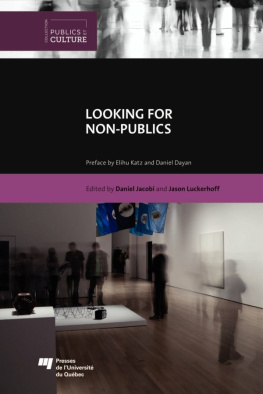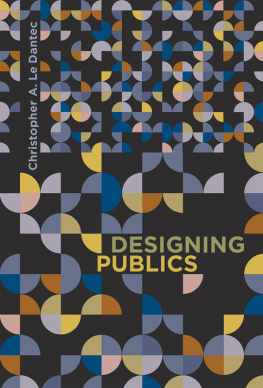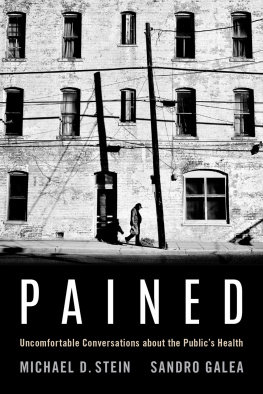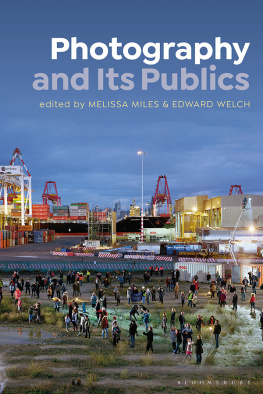Publication of this book was supported by a grant from Simon Fraser University.
2016 by the Board of Trustees
of the University of Illinois
All rights reserved
1 2 3 4 5 C P 5 4 3 2 1

This book is printed on acid-free paper.
Library of Congress Cataloging-in-Publication Data
Names: Kim, Christine, 1973
Title: The minor intimacies of race : Asian publics in North America / Christine Kim.
Description: Urbana : University of Illinois Press, 2016. | Series: The Asian American experience | Includes bibliographical references and index.
Identifiers: LCCN 2015038292
ISBN 9780252040139 (hardback : acid-free paper)
ISBN 9780252081620 (paper : acid-free paper)
ISBN 9780252098338 (e-book)
Subjects: LCSH : AsiansNorth AmericaPublic opinion. | Public opinionNorth America. | Asian AmericansPublic opinion. | AsiansCanadaPublic opinion. | RacismUnited States. | RacismCanada. | Intimacy (Psychology)Social aspectsUnited States. | Intimacy (Psychology)Social aspectsCanada. | United StatesRace relations. | CanadaRace relations. | BISAC : SOCIAL SCIENCE / Ethnic Studies / Asian American Studies. | SOCIAL SCIENCE / Anthropology / Cultural. | HISTORY / Canada / General.
Classification: LCC E 49.2. A 75 K 56 2016 | DDC 973/.0495dc23
LC record available at http://lccn.loc.gov/2015038292
For Yusuf, Zahra, and Zidan
Acknowledgments
I am grateful to many people for encouraging, guiding, and inspiring me over the years that it took to write this book.
While this book is not a revision of a dissertation, the thinking behind this project would not have been possible without the training that I received as a doctoral student. As a graduate student at York University, I was lucky enough to work with Dr. Barbara Godard, who taught me many things about how to read literature, art, and culture, always while remaining conscious of the underlying patterns and structures of power at work. But perhaps even more important, she encouraged the pursuit of intellectual curiosity; for that, I will always be grateful. Dr. Leslie Sanders was also an invaluable teacher and friend while I was a graduate student. She asked me questions that were deceptively simple yet difficult to answer, and these forced me to be much more precise in my thinking. I am also indebted to the mentoring and learning I received from Dr. Terry Goldie and Dr. Tom Loebel while at York. Candida Rifkind, Andrew Burke, Elena Basile, Heather Milne, Kate Eichhorn, Tess Chakkalakal, Trish Salah, and Robert Stacey were a wonderful community of friends while I was a graduate student and I am much richer for the hours of conversation I spent with each of them. Candida Rifkind and Andrew Burke also provided feedback on sections of this book and I am indebted to their careful eyes, sharp questions, and enduring friendship over the years.
The bulk of this book was written when I moved to Vancouver. There are many stimulating intellectual and artistic conversations about Asian Canada . My gratitude also goes to Cindy Mochizuki and David Khang, two Vancouver-based artists whose work I engage with in this book. They have generously shared their art and had long conversations with me about their work.
In the English department at Simon Fraser University, I have the good fortune of working with supportive and thoughtful colleagues that I like a lot. I am especially grateful to Sophie McCall, David Chariandy, Deanna Reder, Jon Smith, and Dave Coley for advice on this project, for engaging with my research and writing, and for their friendship.
Dawn Durante has been an ideal editor, offering guidance and encouragement along the way. To her, I extend my sincere thanks. Amanda Wicks has also been a wonderful support at the University of Illinois Press. I am grateful to Anne Rogers for carefully copyediting this book. I also thank the two anonymous readers for their thoughtful reviews, which made this book much stronger and sharper. To the Asian American Experience series editors, Eiichiro Azuma, Martin Manalansan, Lisa Sun-Hee Park, David Yoo, and especially Jigna Desai, thank you for welcoming me into your roster. Portions of this manuscript appeared previously in the edited collection Asian Canadian Theatre and the journal Interventions, and I am grateful to the publishers for allowing me to reprint them here. An earlier version of part of was published as Intimating Asias, Postcolonial Possibilities, and the Art of David Khang in Interventions: International Journal of Postcolonial Studies 15, no. 1 (2013): 2437. Publication of this book was supported by a publication grant from Simon Fraser University.
For all of its benefits, moving to Vancouver has also meant being separated from family. I have been exceedingly lucky and found supportive and kind friends who have helped Vancouver feel like home. I have been able to write this book in large part because they generously welcomed my family and me into their homes and lives. I am grateful for the friendship of Michelle and Mark Srdanovic, Kirstin and Paul Richter, Melissa and Nathan Thorpe, and Natalie Brenton and Mike Shepherd.
I am grateful to my parents for their unwavering love, support, and encouragement, even when my decisions have worried them at first. They have always made me feel safe in this world. To Eric, my younger brother and oldest companion, and his new wife, Lillian, thank you for your friendship over the years, even when I was at my bossiest. Faruq and Ayesha Varachia are the kindest parents-in-law and I appreciate how they have welcomed me into their family. Love and gratitude also to Yasmine, Fahmeeda, and Abdul Coovadia. To my parents and in-laws, thank you for your extended visits and nurturing my children while I wrote this book.
My biggest thanks are to my husband and children. I am grateful to Yusuf for his constant encouragement, sharp insights into cultural and racial politics, and sense of humor about the everyday. As I said on our wedding day, he has always been more than I expected. Quite literally, this book would not have been possible without my children, Zahra and Zidan. Since they came into my life, I have thought intensely about feeling and the everyday and this work lies at the heart of this book. I am grateful to them for making me feel emotions rather than just theorize them. To Yusuf, Zahra, and Zidan, I dedicate this book with all my love and gratitude.
The Minor Intimacies of Race
Introduction
Multiculturalism, Minor Publics, and Social Intimacy
On November 14, 2011, the Bank of Canada launched into circulation a new $100 bill made of polymer as part of a broader project to overhaul Canadian currency. This new currency serieslike the two that preceded it in 196979 and 1986was publicized as bearing increased security features that would be difficult to counterfeit, news welcomed by many Canadians. While the upgrading of banknotes is a routine occurrence, this particular one became the subject of controversy nearly a year later when several news outlets revealed that, during the design process for this new banknote, the banks focus groups had rejected an earlier version that featured an Asian-looking female scientist on the bill. The news reports list a number of quietly, perhaps even sophisticatedly, racist reasons that the groups found this initial image unsuitable: the reinforcement of a model-minority perception of Asians excelling in the sciences, the singling out of Asians at the expense of other ethnicities, and the racialization of the banknote by pairing a bill yellow-brown in color with an image of an Asian woman (Canadian Press, Asian-Looking Woman Scientist). Of these, one comment stands out for the overtly racist feelings it expresses: The person on it appears to be of Asian descent which doesnt rep(resent) [ sic ] Canada. It is fairly ugly (Canadian Press, Asian-Looking Woman Scientist). Bowing to these criticisms, the Bank of Canada replaced the image with a female scientist of neutral ethnicity (Beeby, Image of Asian-Looking). Unsurprisingly, when news of this decision eventually leaked to the public, complaints emerged about the banks deracialization of whiteness and rendering invisible nonwhite Canadians. In response, Mark Carney, the then governor of the Bank of Canada, quickly issued an apology to those who were offended (Beeby, Canada $100 Bill).










 This book is printed on acid-free paper.
This book is printed on acid-free paper.